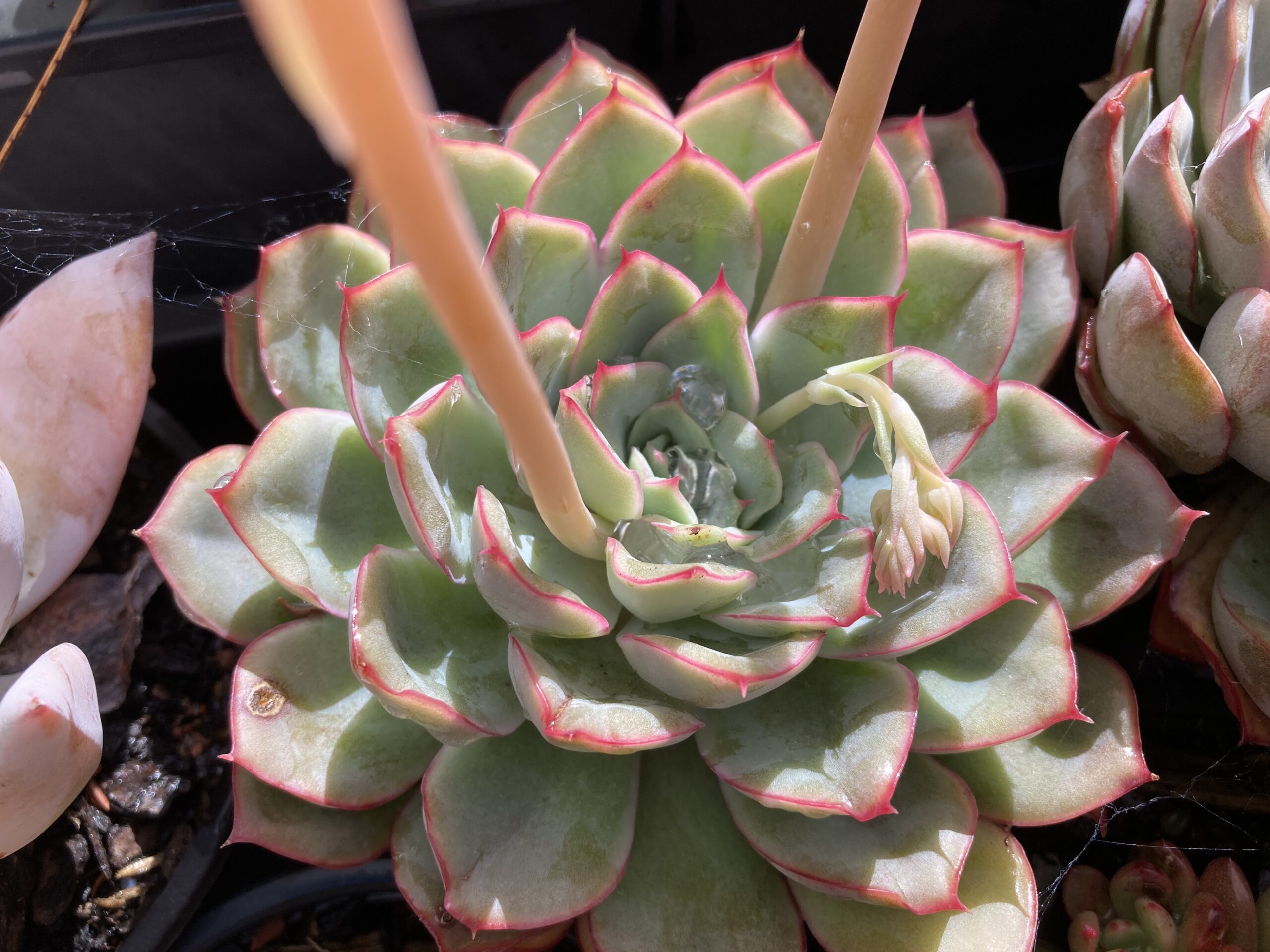Your cart is currently empty!

Echeveria Hercules Care & Propagation
Echeveria Hercules is a hybrid of an unnamed Echeveria pulidonis cultivar and Echeveria elegans cultivar. The result of this cross is a beautiful, large growing succulent that is both hardy and pleasing to the eye.
While Hercules is an easy to grow succulent, there are a few things to know about this plant. Hercules is also a patented succulent meaning any unauthorized propagation and sales is illegal.
Description
Echeveria Hercules is an evergreen succulent with a rosette type arrangement of leaves. The colour is usually blue-gray but can change throughout the year. The edges of the leaves are pink and when the plant is stressed and/or in winter, back of the leaves also turn deep pink.
A white, dusty coating of the protective farina covers all the leaves which are thick, short and pointy. They grow tightly together, if the plant is exposed to enough sunlight.
The rosettes of Echeveria Hercules grow on a low stalk, close to the ground. Individual plants can reach approximately 15-20cm in diameter and 15cm height in ideal conditions.
Hercules forms clumps of rosettes. Once a rosette is mature, it will produce offsets at the bottom. Each offset will then go on to produce offsets of their own. This plant can be very prolific with its offsets and mature plants tend to grow upwards of 10 per year.
Echeveria Hercules flowers every spring. The blooms come up on a tall stalk where individual bell-shaped, yellow flowers open.
Position & Care
Echeveria Hercules is an easy succulent to grow and can stay outdoors all year round in moderate climates with no frost. Unfortunately, this plant is not frost hardy and will need to be brought indoors during winter when frost or snow is expected.
Echeveria Hercules will survive outdoors if the temperature does not fall below 1C/33F. Mild frost should not this succulent but it is likely to cause burns on the foliage.
The best appearance is achieved when Hercules is grown in full sun autumn-spring and morning sun- afternoon shade during summer. During heatwaves of over 35C/95F it is likely this plant will get burn marks from strong UV rays and should be moved under cover/in shade/under 30% shade-cloth for the afternoon.
While Echeveria Hercules will grow in a bright shade outdoors it is unlikely to produce those attractive pink tips and the rosette will not be very compact.
In pots, use succulent potting mix and for best results re-pot to a slightly bigger pot every growing season. This will help the plant grow to its full size and produce many offsets.
Echeveria Hercules can also be grow in the garden and looks particularly fantastic in rockeries, succulent gardens or at the edges. Plants in the ground are usually a lot hardier than those grown in pots. Mulch or pebbles can be used as well.
As long as succulent potting mix is used in pots, Echeveria Hercules should not show any adverse signs to overwatering or too much rain. It is important the plant gets enough sun and that the pot has holes, so the water does not clog the roots.
If Echeveria Hercules is in a greenhouse or undercover, water once the potting mix dries up. In the ground it will not need to be watered all that often, provided it rains at least every other week. During heatwaves/drought a good, deep soak every few days will ensure the plant is happy and grows well.
Echeveria Hercules is not suitable to be grown indoors, other than for over-wintering. The only time this plant will have a chance at surviving inside is if it’s grown under plant growing lights or in a super bright sunroom.
Propagation
As mentioned above, Echeveria Hercules will grow quite a few offsets but technically, any propagation is illegal due to it being patented. To read a more in-depth article on how to propagate succulent by offsets, go here.
Same applies to leaf propagation. We have a detailed article on succulent leaf propagation here.
Pests
Echeveria Hercules is susceptible to all the usual succulent pests. Aphids can attack the flowers, while the mealy bugs can burrow between the leaves.
For a list of animals that like to eat succulents, you can read another one of our articles here.
Toxicity
As most Echeveria, Echeveria Hercules is not toxic to humans, dogs, cats, other pets or livestock, though it is not recommended to consume this plant as food.
Where can I get it?
Echeveria Hercules can be a little hard to get but specialist succulent nurseries/ online nurseries should stock this plant.